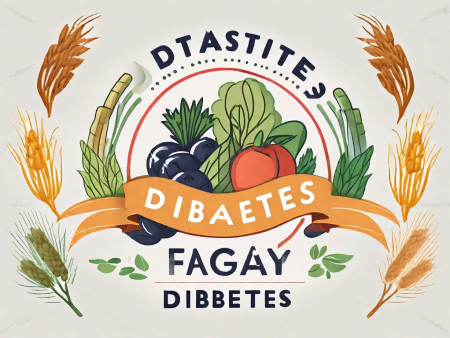Discover the detrimental effects of alcohol and tobacco consumption on the heart.
How Alcohol and Tobacco Consumption Impact the Heart
Welcome to this informative article on how alcohol and tobacco consumption impact the heart! In this article, we’ll explore the fascinating world of the heart and delve into the effects that these substances can have on its health.
Understanding the Heart’s Function
Before we dive into the impact of alcohol and tobacco, let’s take a moment to understand the incredible function of our heart. This hardworking muscle plays a vital role in our body’s overall well-being.
The heart, an organ roughly the size of a closed fist, is a marvel of engineering and biology. It is like a supercharged pump, tirelessly circulating blood throughout our entire body. It ensures that oxygen and nutrients reach each and every cell while simultaneously removing waste products. Simply put, it keeps us alive and kicking!
But how does the heart accomplish this incredible feat? Let’s explore the role of the heart in the body in more detail.
The Role of the Heart in the Body
The heart is the central component of the circulatory system, which consists of a vast network of blood vessels. It acts as a powerful muscular pump that propels blood throughout the body, ensuring that every organ and tissue receives the necessary oxygen and nutrients to function optimally.
When the heart beats, it contracts and relaxes rhythmically, creating a pumping action. This action is responsible for the circulation of blood, which is composed of red and white blood cells, platelets, and plasma. As the heart contracts, it pushes oxygen-rich blood from the left side of the heart into the aorta, the largest artery in the body. From there, the blood branches out into smaller arteries, eventually reaching every corner of the body.
As the oxygen-rich blood travels through the arteries, it delivers its precious cargo to the cells, nourishing them and providing them with the energy they need to carry out their respective functions. At the same time, waste products, such as carbon dioxide, are collected from the cells and transported back to the heart.
Once the oxygen-depleted blood reaches the right side of the heart, it is pumped into the lungs, where it releases carbon dioxide and picks up fresh oxygen. The oxygenated blood then returns to the left side of the heart, ready to be pumped out to the body once again.
This continuous cycle of oxygenation, circulation, and deoxygenation is what keeps our bodies functioning properly. Without the heart’s tireless efforts, our organs and tissues would be deprived of the vital resources they need to thrive.
Key Components of the Heart
The heart consists of four main components: the left atrium, the left ventricle, the right atrium, and the right ventricle. Together, these parts work harmoniously to maintain the heart’s pumping action, allowing it to achieve its life-sustaining mission.
The left atrium and left ventricle are responsible for receiving and pumping oxygenated blood, respectively. The left atrium receives the oxygenated blood from the lungs and passes it to the left ventricle, which then pumps it out to the rest of the body.
On the other side of the heart, the right atrium and right ventricle handle the deoxygenated blood. The right atrium receives the deoxygenated blood from the body and passes it to the right ventricle, which then pumps it to the lungs for oxygenation.
These four components work together in a coordinated manner, allowing the heart to efficiently pump blood throughout the body. The walls of the heart are made up of specialized cardiac muscle tissue, which contracts and relaxes with each heartbeat, ensuring a continuous flow of blood.
Additionally, the heart is equipped with a sophisticated electrical system that controls its rhythm. This system, known as the cardiac conduction system, generates electrical impulses that regulate the timing and coordination of the heart’s contractions. It ensures that the heart beats at a steady pace, maintaining a healthy and regular rhythm.
Understanding the intricacies of the heart’s function and its key components is essential for appreciating the vital role it plays in our overall well-being. By keeping our hearts healthy and functioning optimally, we can ensure a long and fulfilling life.
The Effects of Alcohol on the Heart
Now, let’s turn our attention to how alcohol can impact this vital organ.
The heart, a remarkable organ responsible for pumping oxygen-rich blood throughout the body, is susceptible to the effects of alcohol consumption. Understanding the short-term and long-term effects of alcohol on heart health is crucial for maintaining overall well-being.
Short-term Effects of Alcohol on Heart Health
When we consume alcohol, it can have immediate effects on our heart. Alcohol causes our blood vessels to dilate, resulting in a temporary drop in blood pressure. This may leave us feeling light-headed and can potentially lead to dizziness.
Furthermore, alcohol can disrupt the heart’s electrical signals, potentially causing an irregular heartbeat. This condition, known as arrhythmia, can be uncomfortable and even dangerous if not addressed promptly. It is important to note that individuals with pre-existing heart conditions may be more susceptible to these short-term effects.
Long-term Effects of Alcohol on Heart Health
Prolonged alcohol consumption can have more lasting effects on our heart. Excessive drinking can weaken the heart muscle over time, leading to a condition called alcoholic cardiomyopathy. This ailment can result in heart failure and an increased risk of other cardiovascular diseases.
Moreover, chronic alcohol abuse can elevate blood pressure levels, making the heart work harder than normal. This increased strain on the heart can increase the likelihood of heart attack or stroke. It is essential to recognize that the long-term effects of alcohol on the heart are cumulative, meaning that the more alcohol consumed over time, the greater the risk to heart health.
Additionally, alcohol abuse often goes hand in hand with other unhealthy lifestyle choices, such as poor diet and lack of exercise. These factors can further contribute to the deterioration of heart health and increase the risk of developing cardiovascular diseases.
It is worth noting that moderate alcohol consumption, defined as up to one drink per day for women and up to two drinks per day for men, may not have the same detrimental effects on heart health as excessive or chronic alcohol consumption. However, it is always important to consult with a healthcare professional to determine what level of alcohol consumption is appropriate for individual circumstances.
In conclusion, the effects of alcohol on the heart can range from short-term disruptions in blood pressure and heart rhythm to long-term consequences such as weakened heart muscle and increased risk of cardiovascular diseases. Understanding these effects can serve as a reminder to prioritize heart health and make informed choices regarding alcohol consumption.
The Impact of Tobacco on the Heart
Now let’s shift our focus to the impact that tobacco, in all its smoky glory, can have on the heart.
When we think about the consequences of tobacco use, we often think about the damage it does to our lungs. However, the heart is also greatly affected by the harmful substances found in tobacco.
Immediate Consequences of Tobacco Use on the Heart
With every puff of a cigarette, tobacco releases harmful substances into our bodies, including nicotine and carbon monoxide. These toxic compounds have an immediate impact on our heart.
Nicotine, the addictive component of tobacco, causes our blood vessels to constrict. This constriction leads to higher blood pressure, as the heart has to work harder to pump blood through the narrowed vessels. The increased workload on the heart can put a strain on its muscles and lead to long-term damage.
Additionally, carbon monoxide, a poisonous gas found in cigarette smoke, reduces the amount of oxygen in the blood. This means that the heart has to work even harder to deliver oxygen to the rest of the body. The lack of oxygen can weaken the heart over time and increase the risk of heart disease.
Chronic Impact of Tobacco on Heart Health
It’s no secret that smoking is a leading cause of heart disease. Regular tobacco use can damage the lining of our arteries, causing a build-up of plaque. This process, known as atherosclerosis, is a major contributor to heart attacks and strokes.
As the plaque builds up in the arteries, they become narrowed and hardened. This restricts blood flow to the heart, depriving it of the oxygen and nutrients it needs to function properly. The heart may have to work even harder to pump blood through the narrowed arteries, leading to further strain and potential damage.
Furthermore, smoking has been shown to promote the formation of blood clots, which can block blood vessels and lead to cardiovascular complications. These clots can form in the arteries or in the heart itself, causing a heart attack or other serious cardiac events. The longer one smokes, the greater the damage inflicted upon the heart.
It’s important to note that the damage caused by tobacco is not limited to active smokers. Secondhand smoke, which is the smoke exhaled by smokers or given off by burning tobacco, can also have detrimental effects on the heart. Non-smokers who are regularly exposed to secondhand smoke have an increased risk of developing heart disease.
In conclusion, tobacco use has a profound impact on the heart. From the immediate consequences of nicotine and carbon monoxide to the chronic damage caused by atherosclerosis and blood clots, smoking poses a significant threat to heart health. Quitting smoking and avoiding exposure to secondhand smoke are crucial steps in protecting our hearts and reducing the risk of cardiovascular disease.
The Combined Impact of Alcohol and Tobacco on the Heart
Now, what happens if we mix alcohol and tobacco together?
Interactions between Alcohol and Tobacco
The combined effects of alcohol and tobacco can pose an even greater risk to our cardiovascular system. Smoking while consuming alcohol enhances the immediate impact on blood pressure, increasing the likelihood of an irregular heartbeat.
Moreover, the toxic components found in both alcohol and tobacco can act synergistically, further damaging our heart and blood vessels. It’s like throwing fuel on the flames of potential heart problems.
Cumulative Effects of Alcohol and Tobacco on Heart Health
The cumulative effects of alcohol and tobacco on the heart are not to be taken lightly. Continual consumption of these substances can lead to severe heart damage, increasing the risk of heart failure, coronary artery disease, and other cardiovascular complications.
Prevention and Risk Reduction Strategies
Fortunately, there are several strategies we can employ to safeguard our heart health and reduce the impact of alcohol and tobacco.
Lifestyle Changes for Heart Health
Adopting a heart-healthy lifestyle can work wonders in protecting our cardiovascular system. Regular exercise, a balanced diet, stress management, and getting sufficient sleep are all crucial steps in promoting heart health.
Limiting alcohol consumption and quitting smoking are also key in reducing the risk of heart disease. Remember, it’s never too late to make positive changes!
Medical Interventions for Alcohol and Tobacco Use
If you’re struggling to kick these habits on your own, don’t fret! Reach out to healthcare professionals who can provide support and guidance. There are various medications, support groups, and counseling services available to help you break free from the clutches of alcohol and tobacco.
In conclusion, the impact of alcohol and tobacco consumption on the heart is no laughing matter. It’s essential to understand the potential risks and take proactive steps to protect our cardiovascular health. By making conscious choices and seeking the necessary support, we can ensure our heart keeps pumping strong for years to come!







